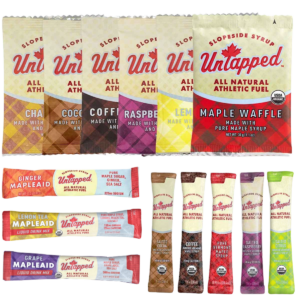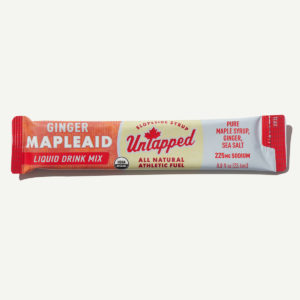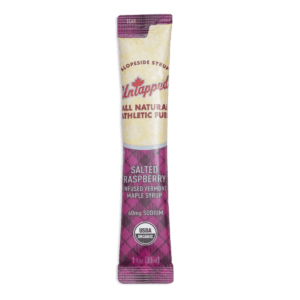Hydration pack or no hydration pack, that is the question.
That’s a very common question ahead of gravel races, as are those revolving around aerobars and tire pressure. UnTapped co-founder and gravel racer Ted King here and I’d like to have a chat on the first of these topics; namely, how to work through the toughest, hottest days on a bike. From my experience, here’s a breakdown of the most important topics:
- Hydration strategy
- Clothing
- Feet
- Ice socks
- Cold beverages
- Flavor fatigue
- Heat adaptation
Beginning with the topic of hydration packs, having a hydration strategy is something to be highly considered and better yet, practiced. I suggest finding your own benchmark and then tweaking quantity from there. We suggest one bottle of Mapleaid per hour in normal riding conditions. Intuitively, riding in warmer conditions or for a longer time means consuming more, while cooler or easier conditions means consuming a little bit less.
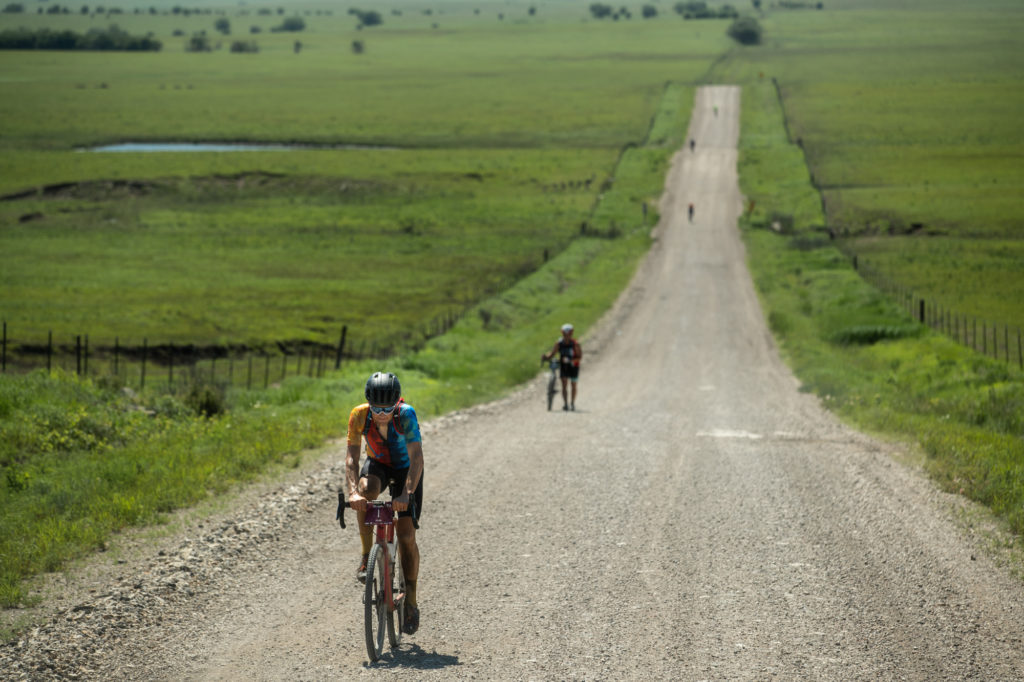
Our thirst receptors are acute, so to drink when you’re thirsty is a helpful rule of thumb. For reference on quantity, I tend to operate with the one bottle per hour rule in typical conditions, but during the hottest mid-summer races, I can drink two full 26 ounce bottles per hour!
More food (and drink) for thought: in long, hot races, it’s next to impossible to dig yourself out of dehydration hole. While it’s also difficult to drink the exact quantity you’re perspiring, continually sipping throughout the day is a better strategy than finding yourself deep hydration debt and continually having to chug to catch up.
Oh, and as it pertains to a hydration pack, my advice is “when in doubt, bring it”. You’ll be happier to have it and not use it than to need it and not have it.
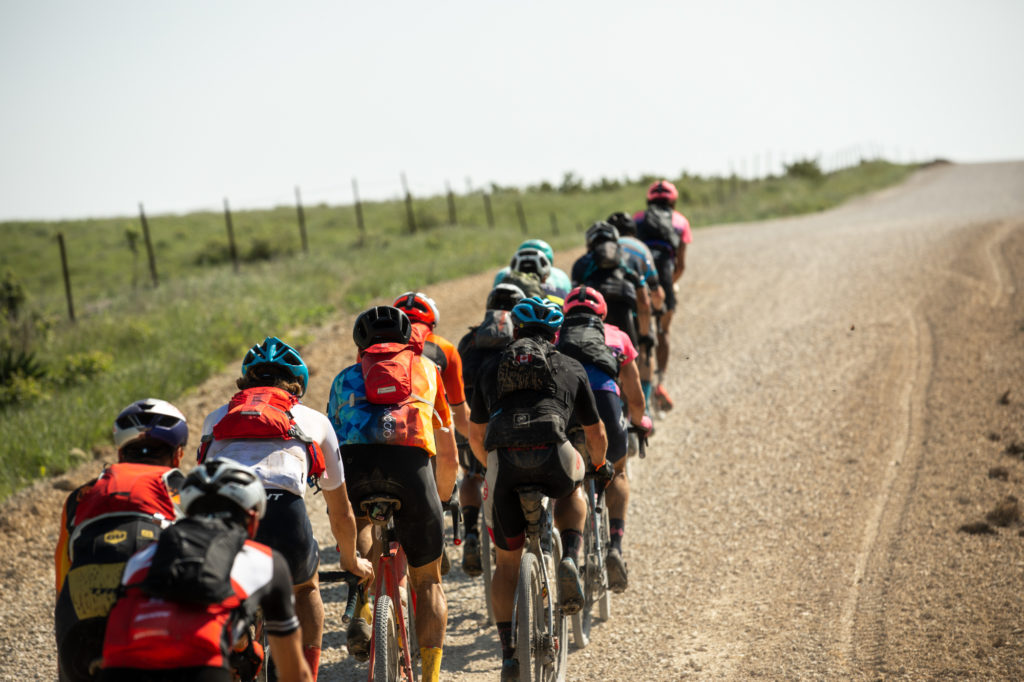
Next, what to wear. Super lightweight clothing is a helpful and apparel companies will have attire meant for the hottest summer days. The lighter the material, the easier it is to breathe, plus it will retain less water and weigh less so you’re overall lighter. Additionally, sticking to lighter colored kit will usually offer a noticeably cool improvement under the baking hot sun.
You can anticipate that in long, hot races, your feet will swell. Cycling shoes, and especially gravel shoes, are meant to be comfortable, not like the footwear required in ballet. Given the option, may I suggest sizing up. Tight shoes on a hot summer day can be like the princess and the pea resulting in debilitating pain with every pedal stroke.
While studies are mixed, the latest reports I’ve seen shows benefits of ice. Anecdotally, however, ice is outstanding! Specifically, make up some ice socks and have them stored in a cooler for easy access during a mid-ride, mid-race pit stop. An ice sock is a handful of ice, anywhere from the size of a baseball or softball, stuffed into a stocking and tied off with a knot. Cram that around the back collar of your jersey and feel the icy cold water melt down your back to your great pleasure.
There’s the intuitive thought that drinking cool beverages will be helpful to cool yourself down from the inside. The studies I’ve seen on this are far from concrete, but the firmest data suggests that if it’s empirically going to work, the drink needs to be an icy slurry. Meanwhile, simply cold drinks are a drop in the bucket as compared to the mass of your body. That said, consuming cold drinks is far more enjoyable than consuming hot drinks, so if it’s good for your mind or how you feel, it’s good for you. Along similar lines, one of the best — and certainly tastiest — ways to cool down after a race is with a frosty, cold, maple creemee.
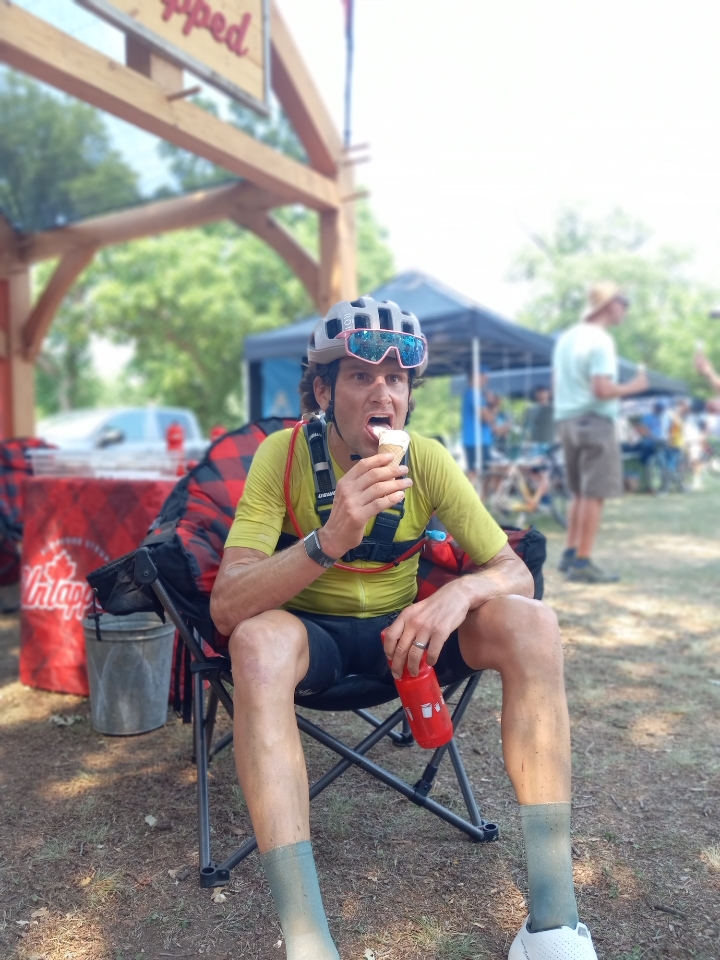
If you’re out for one of these all day, 200+ mile events, you can anticipate flavor fatigue becoming an issue. That is, the food you typically prefer might become a chore to get down. I suggest having a variety of things available to eat that aren’t just a single flavor. Nutrition that’s chock full of additives and supplemental ingredients are known to cause gastro distress — called “gut rot” which is as painful as it sounds — especially in the large quantities required for all day events. Having this variety of tastes and being free of additives is at the core of why we created UnTapped.
As we’re wandering further from the knee jerk tips and tricks, if you have the ability to accustom yourself with the heat, that’s going to be beneficial. Easier said than done, not everyone can travel and train in hot climates or have a sauna installed in their backyard. That said, if you do have those options, the initial shock of a 100 degree day won’t be so ferocious the first time around.
Perhaps best yet, think of every day out in the heat as an experiment. See what works for you, what doesn’t, and improve your experience every time.
$34.95
$2.19 – $36.95 — or from $1.86 – $31.41 / month for 3 months
$2.19 – $36.95 — or from $1.86 – $31.41 / month for 3 months
